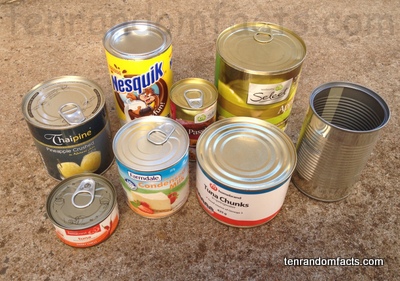Tin cans are the stars of food packaging.
- Tin cans are containers most commonly used in commercial production, to package or store items like food or other products.
- ‘Tin cans’, also known as ‘tins’; ‘steel cans’; ‘cans’; and ‘steel packaging’, are made of a metal material that is easy to cut, such as aluminium or tinplate steel.
- The shape of a tin can is most commonly cylindrical, although round-edged prisms are also available; and they generally feature a rim on the top, and sometimes bottom edge, as well as a label, that is usually either printed or glued on.
- Tin can walls often have one or more ridges or indents circling the can, giving a corrugated look, and these are designed to add strength to the can, and they can also sometimes be found on the top and base.
- Tin cans are measured by a variety of formats, from net weight, volume and size, often varying by country.
- Tin cans are typically made by forming a piece of sheet metal into a cylinder, and the edges if there are any, are welded, soldered, or adhered together, while the lid and top edge is often folded into place by a machine, to seal the can.
- Around 50 to 75 percent of tin cans are recycled, causing the can to be the most recycled packaging product in the world.
- After lengthy storage periods, tin cans can corrode and toxins spread into foods, thus causing poisoning, with symptoms like vomiting and dizziness; although corrosion is minimised by the application of a special lacquer coating to the interior of the can.
- In 1809, Frenchman Nicholas Appert, a chef, developed a method of preserving food in sealed containers, for which he won a prize, and Philippe de Girard, an inventor also from France soon used this idea with tin cans, and after the patent was sold by Englishman Peter Durand to Bryan Donkin and John Hall, the idea was further refined and the two commenced mass production of canned food, in 1813.
- The opening of tin cans usually requires the use of a cutting tool, such as a can opener, or a lever mechanism such as a pull tab.
Bibliography:
Geoghegon T, The story of how the tin can nearly wasn’t, 2013, BBC News Magazine, http://www.bbc.com/news/magazine-21689069
History of the Can – Timeline, 2015, Quality by Vision, http://www.qbyv.com/en/canhistory
Tin can, 2015, Wikipedia, http://en.wikipedia.org/wiki/Tin_can






